Persepolis: The Story of a Childhood
4.6
-
6,139 ratings
NEW YORK TIMES BESTSELLER • Wise, funny, and heartbreaking, Persepolis is Marjane Satrapi’s acclaimed graphic memoir of growing up in Iran during the Islamic Revolution.
“A wholly original achievement.... Satrapi evokes herself and her schoolmates coming of age in a world of protests and disappearances.... A stark, shocking impact.” —The New York Times: "The 50 Best Memoirs of the Past 50 Years"
In powerful black-and-white comic strip images, Satrapi tells the coming-of-age story of her life in Tehran from ages six to fourteen, years that saw the overthrow of the Shah’s regime, the triumph of the Islamic Revolution, and the devastating effects of war with Iraq. The intelligent and outspoken only child of committed Marxists and the great-granddaughter of one of Iran’s last emperors, Marjane bears witness to a childhood uniquely entwined with the history of her country.
Persepolis paints an unforgettable portrait of daily life in Iran and of the bewildering contradictions between home life and public life. Marjane’s child’s-eye view of dethroned emperors, state-sanctioned whippings, and heroes of the revolution allows us to learn as she does the history of this fascinating country and of her own extraordinary family. Intensely personal, profoundly political, and wholly original, Persepolis is at once a story of growing up and a reminder of the human cost of war and political repression. It shows how we carry on, with laughter and tears, in the face of absurdity. And, finally, it introduces us to an irresistible little girl with whom we cannot help but fall in love.
Hardcover
$14.89
Paperback
$9.95
Ships from
Amazon.com
Payment
Secure transaction
ISBN-10
037571457X
ISBN-13
978-0375714573
Print length
160 pages
Language
English
Publisher
Pantheon
Publication date
May 31, 2004
Dimensions
5.91 x 0.51 x 8.86 inches
Item weight
9.2 ounces
Editorial Reviews
A New York Times Notable Book • A Time Magazine “Best Comix of the Year” • A San Francisco Chronicle and Los Angeles Times Best Seller
“Delectable. . . Dances with drama and insouciant wit.” –The New York Times Book Review
“A stunning graphic memoir hailed as a wholly original achievement in the form. There’s still a startling freshness to the book. It won’t age. In inky shadows and simple, expressive lines—reminiscent of Ludwig Bemelmans’s “Madeline”—Satrapi evokes herself and her schoolmates coming of age in a world of protests and disappearances . . . A stark, shocking impact.” —Parul Sehgal, “The 50 Best Memoirs of the Past 50 Years” The New York Times
“A dazzlingly singular achievement. . . . Striking a perfect balance between the fantasies and neighborhood conspiracies of childhood and the mounting lunacy of Khomeini's reign, she's like the Persian love child of Spiegelman and Lynda Barry.” –Salon
“A brilliant and unusual graphic memoir. . . . [Told] in a guileless voice . . . accompanied by a series of black-and-white drawings that dramatically illustrate how a repressive regime deforms ordinary lives.”–Vogue
"Odds are, you’ll be too busy being entertained to realize how much you’ve learned until you turn the last page.”–Elle.com
“[A] self-portrait of the artist as a young girl, rendered in graceful black-and-white comics that apply a childlike sensibility to the bleak lowlights of recent Iranian history. . . . [Her] style is powerful; it persuasively communicates confusion and horror through the eyes of a precocious preteen.” –Village Voice
"This is an excellent comic book, that deserves a place with Joe Sacco and even Art Spiegelman. In her bold black and white panels, Satrapi eloquently reasserts the moral bankruptcy of all political dogma and religious conformity; how it bullies, how it murders, and how it may always be ridiculed by individual rebellions of the spirit and the intellect." --Zadie Smith, author of The Autograph Manand White Teeth
"You've never seen anything like Persepolis—the intimacy of a memoir, the irresistability of a comic book, and the political depth of a the conflict between fundamentalism and democracy. Marjane Satrapi may have given us a new genre." —Gloria Steinem
"I grew up reading the Mexican comics of Gabriel Vargas, graduated to the political teachings of Rius, fell under the spell of Linda Barry, Art Spiegelman, and now I am a fan of Marjane Satrapi. Her stories thrummed in my heart for days. Persepolis is part history book, part Scheherazade, astonishing as only true stories can be. I learned much about the history of Iran, but more importantly, it gave me hope for humanity in these unkind times." —Sandra Cisneros, author of The House on Mango Street and Caramelo
"I thought [Persepolis] was a superb piece of work, not only for the child's eye view—the developing child's eye view—of a society unknown to many of us in the west, and feared and suspected in proportion to being unknown.... Satrap has found a way of depicting human beings that is both simple and immediately comprehensible, AND is almost infinitely flexible. Anyone who's tried to draw a simplified version of a human face knows how immensely difficult it is not only to give the faces a range of expression, but also to maintain identities from one frame to the next. It's an enormous technical accomplishment." —Philip Pullman, author of The Golden Compass, The Subtle Knife, and The Amber Spyglass.
"I cannot praise enough Marjane Satrapi's moving account of growing up as a spirited young girl in revolutionary and war-time Iran. Persepolis is disarming and often humorous but ultimately it is shattering." —Joe Sacco, author of Palestine and Safe Area Gorazde
"This witty, moving and illuminating book demonstrates graphically why the future of Iran lies with neither the clerics nor the American Empire." —Tariq Ali, Author of The Clash of Fundamentalisms: Crusades, Jihads and Modernity
About the authors
Marjane Satrapi
Marjane Satrapi was born in 1969 in Rasht, Iran. She grew up in Tehran, where she studied at the French school, before leaving for Vienna and Strasbourg to study decorative arts. She currently lives in Paris, where she is at work on the sequel to Persepolis. She is also the author of several children's books.
Reviews
Customer reviews
4.6 out of 5
6,139 global ratings
Lee Dolin
5
Excellent book and informative
Reviewed in the United States on January 4, 2024
Verified Purchase
I read this for school and bought it for a Persian friend who has never read it. Solid book!
Mommy2boys12
5
My Opinion on the book
Reviewed in the United States on January 22, 2020
Verified Purchase
The Book Persepolis, By Marjie Satrapi, caught my eye right away. Uneducated about the Islamic revolution in 1980, I saw this book and knew I had to read it. Once the book arrived, I was immediately surprised by the book and the fact that it was a graphic novel. However, this really excited me because I had always loved reading graphic novels when I was younger. The book had one of the freshest perspectives on writing that I had read in a while. This has been one of the most interesting Memoirs I have ever read. The Memoir is so powerful because of its ability to telling stories through not just words but also pictures, and how it was able to express certain emotions, in ways ordinary books could not. For example, Satrapi uses the Graphic novel sense of the book to express the emotion that you could not see or empathize with through just reading text. Whether Satrapi decides to express happiness or sadness, Through the novel, she expresses the way she felt personally and also gives you a visual, to help put yourself into her shoes. She also gives the reader new insight into the Islamic Revolution and people who lived in Iran. Many people are quick to judge people, and that comes especially true when talking about people during the Islamic Revolution. She makes the reader understand that the people who had to first-hand witness the Islamic Revolution, are no different than ordinary people, just like the reader and even helps you sympathize with the character. Satrapi does a great job at incorporating western fashion, to help show the reader visually that people from who lived in Iran during the Islamic Revolution are just like any ordinary person. This book blew me away, and I look forward to reading the second part of Satrapi’s Persepolis.
Read more
23 people found this helpful
Nicole Mohr
5
A Necessary Dose of Perspective on the Middle East
Reviewed in the United States on September 19, 2012
Verified Purchase
I have taught this book to my tenth grade English students for the past five years, and I believe it has helped to send my former students into society as informed adults with enough perspective to see Iranian people as fellow global citizens, not Middle Eastern enemies. Satrapi wrote the book to inform people about the Islamic Revolution and to give readers an insider perspective. I know that the book was originally written in French, and then later translated to English, which are the main languages of the Western world. This points to her intended audience - Westerners. Satrapi was trying to show the Western world what Iranian people are really like -- not extremists, not radical Muslims - but mostly peace-loving, creative, independently thinking people who value their Persian culture and lifestyle and have suffered greatly for remaining in their homeland in spite of the challenges. Throughout the book, she paints herself as religiously moderate and politically involved, even as a child, and not at all negative towards the West. With images of the Iranian hostage crisis in the back of our minds, it is easy for Americans to assume that all Iranians hate Americans, but this is far from true. Satrapi shows her love for Western culture and music and books with Michael Jackson and Kim Wilde and Iron Maiden. She mostly clearly demonstrates the impact of their suffering with how drastically the loss of her Uncle Anoosh impacted her. She also wants people to have the facts about the revolution as well, which we see in the wealth of historical information integrated into her memoir. I personally believe that Satrapi was very effective in helping society see Iranians differently, mostly from my personal experience. Before reading this book six years ago, I assumed that if the theocracy remains in power, that must mean that the majority of people in Iran must be really religious and anti-West, or else why wouldn't they overthrow their government? This book helped me see that they are really suffering under a different kind of tyranny, and also helped me understand why it happened. She shows why they overthrew the Shah - for freedom from an oppressive government, a government in which she knew that the difference between the social classes caused many people pain, but then she also shows throughout the rest of the book how the Iranian people were manipulated into becoming faithful to an Islamic regime. The serious re-structuring of schools caused great suffering and contributed to the difficulty with changing mindsets. If the religious government controls the schools, then the children are inculcated with the religious ideas, much like how Marjane was initially inculcated with the thought that the Shah was chosen by God. In addition, the Islamic regime ultimately secured their power by uniting the Iranian people in war against a foreign enemy and carrying on the war until the society was so completely devastated, they would not have the energy or desire to cause further revolt of any kind. I think this is an important topic for the Western world to see, as Western relations with Iran affect us in many ways. Our government currently has strict economic sanctions on Iran, which causes our gas prices to go up and impacts us where we feel it the most, our wallets; however, most people do not see the reason behind this, and why the world needs to take note of the tyranny in Iran. In addition, many people here in the United States lump together all of the people in the Middle East under the label of "Arabs" and then furthermore, see them all as extreme Muslims and terrorists, particularly since 9/11. As a student pointed out in class today, the book was published shortly after 9/11, which is likely not a coincidence. In the days after this event, many Americans viewed any Middle Eastern man with a beard or any Middle Eastern woman with a hijab as a terrorist, a threat; yet Marjane paints us a much needed picture of a world so many Americans do not realize exists - a world in which many free spirited Iranian people endure a forced dress code that represents far more oppression than we here in America could ever imagine.
Read more
40 people found this helpful
Kandy
5
Fun to read and very easy to understand the series of events
Reviewed in the United States on April 27, 2023
Verified Purchase
My friend chose this for a book club read. I thought, why would I want to read a graphic novel? But to my surprise, it was very good and helpful to understand from an outsiders view the events leading from before the suppression of the people,especially women, to present times. I’m am glad I read it and I can recommend it to anyone.
5 people found this helpful
Jessica
4
The Other Side of the Story
Reviewed in the United States on February 22, 2013
Verified Purchase
I am an English tutor. Many of the people I help are Arabic. When you deal with any culture, it is inevitable that difficulties will arise due to cultural differences. It is worse, though, when there are political difficulties between your country and theirs. Naturally, both sides are going to have prejudices. To better understand the people I deal with, I have been trying to familiarize myself with the cultures that I come into contact with. This is why I chose this book.
It is a graphic novel. However, though the pictures might attract younger readers, I should warn anyone who is purchasing books for their child that it is probably more appropriate for teens. It depends, of course, on how much parents protect their child and how willing they are to answer questions. Though the book isn't exactly "snuff" (meaning it focuses totally on violence and killing), it doesn't shy away from the violence that the author witnessed or heard about. There is one picture that shows a man urinating on another man (as a form of torture). There are references to torture, dismemberment, and rape. Another picture showed how the army locked a bunch of people inside a movie theater and set fire to it.
All that aside, this is mostly a book about a girl growing up in Tehran, Iran during the Islamic Revolution. The story starts in 1979-1980, when she is ten years old. It concludes when she is fourteen years old (though there is a sequel book after this one). It has a very strong plot and provides interesting tidbits about Islamic culture. Iran has had a tumultuous history that is rather hard to keep track of. However, this was particularly interesting because some of the events were ones I heard about when I was a child growing up. It provides another viewpoint on the same events--such as Saddam Hussein's campaign against Iran. There is also some nostalgia, as the girl had a fascination with American culture of that period. Though some of the things depicted are disturbing--moreso because the book is visual--it has its moments of humor. The author successfully humanizes the characters so you can identify and sympathize with them to some degree.
I did enjoy the book, and I would recommend it to older readers who are interested in learning about other cultures. If you like "coming of age" stories, you will probably like this too. Be warned that it won't always made you feel good, and it may be inappropriate for young people and sensitive people. However, it is a good book--and I plan to keep it, as well as buy the sequel.
Read more
10 people found this helpful
Best Sellers

The Great Alone: A Novel
4.6
-
152,447
$5.49

The Four Winds
4.6
-
156,242
$9.99

Winter Garden
4.6
-
72,838
$7.37

The Nightingale: A Novel
4.7
-
309,637
$8.61

Steve Jobs
4.7
-
24,596
$1.78

Iron Flame (The Empyrean, 2)
4.6
-
164,732
$14.99
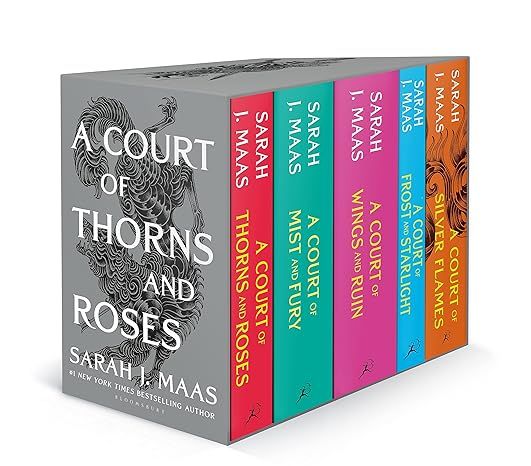
A Court of Thorns and Roses Paperback Box Set (5 books) (A Court of Thorns and Roses, 9)
4.8
-
26,559
$37.99

Pretty Girls: A Novel
4.3
-
88,539
$3.67
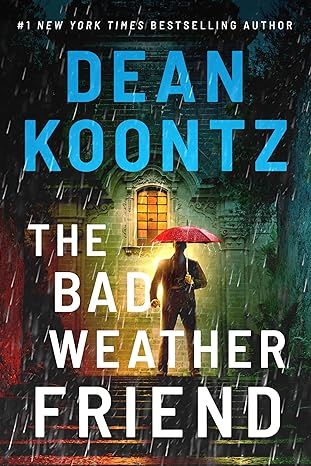
The Bad Weather Friend
4.1
-
34,750
$12.78

Pucking Around: A Why Choose Hockey Romance (Jacksonville Rays Hockey)
4.3
-
41,599
$14.84
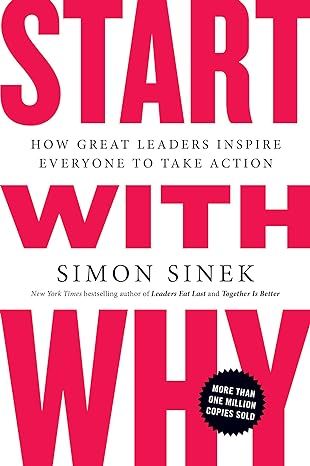
Start with Why: How Great Leaders Inspire Everyone to Take Action
4.6
-
37,152
$9.99
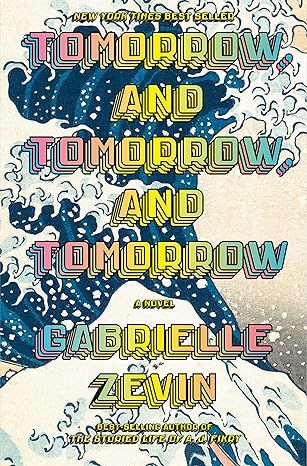
Tomorrow, and Tomorrow, and Tomorrow: A novel
4.4
-
95,875
$13.99

Weyward: A Novel
4.4
-
27,652
$11.99
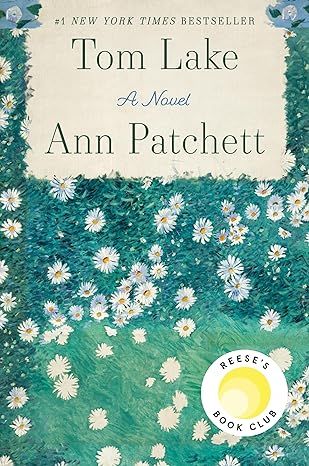
Tom Lake: A Reese's Book Club Pick
4.3
-
37,302
$15.74
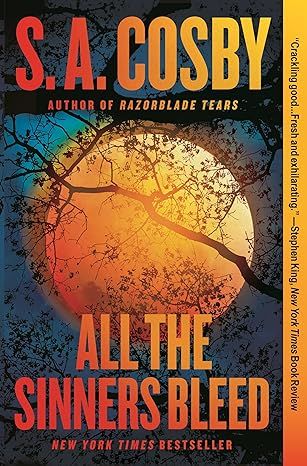
All the Sinners Bleed: A Novel
4.4
-
12,894
$13.55
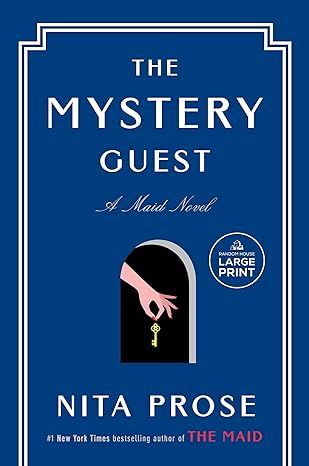
The Mystery Guest: A Maid Novel (Molly the Maid)
4.3
-
9,844
$14.99

Bright Young Women: A Novel
4.2
-
8,485
$14.99
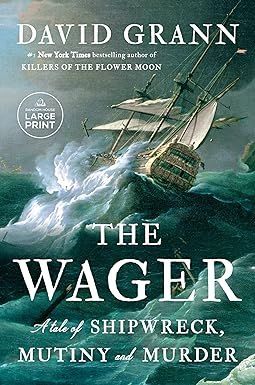
The Wager: A Tale of Shipwreck, Mutiny and Murder (Random House Large Print)
4.5
-
28,672
$14.99
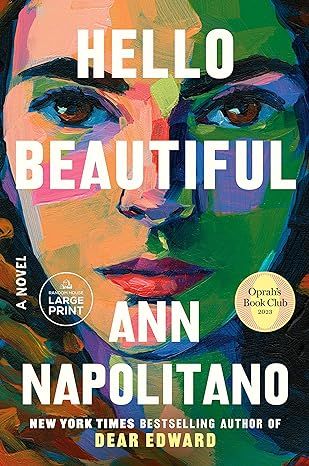
Hello Beautiful (Oprah's Book Club): A Novel (Random House Large Print)
4.4
-
79,390
$14.99
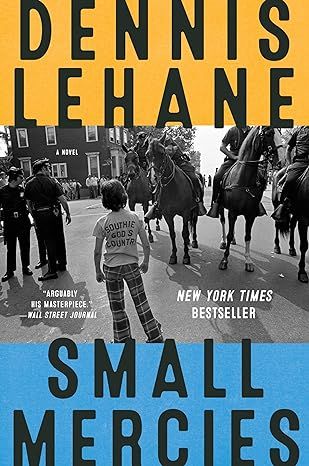
Small Mercies: A Detective Mystery
4.5
-
16,923
$10.00

Holly
4.5
-
31,521
$14.99
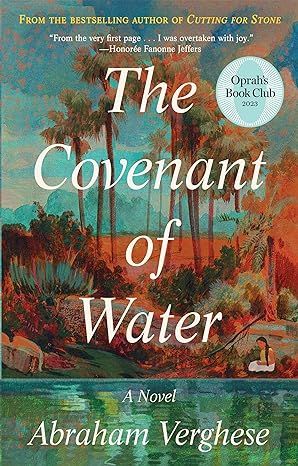
The Covenant of Water (Oprah's Book Club)
4.6
-
69,712
$9.24
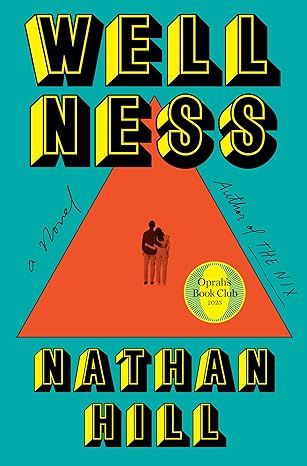
Wellness: A novel
4.1
-
3,708
$14.99
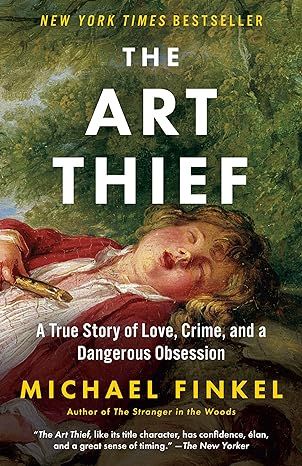
The Art Thief: A True Story of Love, Crime, and a Dangerous Obsession
4.3
-
4,805
$14.99

